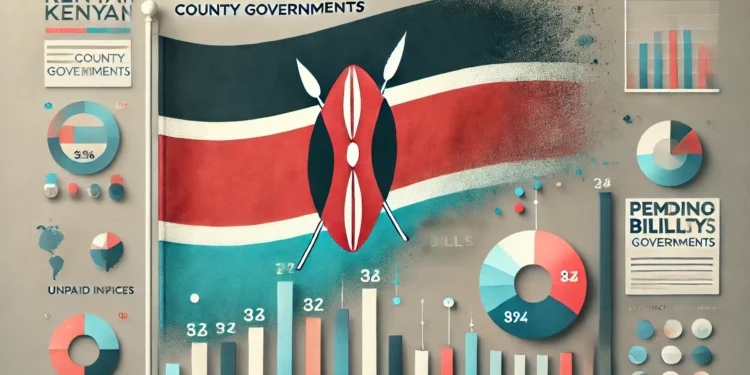- The Controller of Budget paints a grimmer picture occasioned pending bills burdening county governments in Kenya.
- Nairobi City County accounts for 62% of the total pending bills, amounting to Ksh. 12o.06 billion.
- Counties reported outstanding pending bills amounting to Ksh. 194.01 billion, as of September 30th 2024, with much of it primarily from the reccurrent expenditure.
Pending bills within county governments have risen disproportionately, rendering key developmental needs, such as infrastructure, health, and agriculture, sterile. A continued inflamous rise in pending bills underscores the overlapping leadership interest concurring with key transformative initiatives—a problem leading to financial insolvency, delaying crucial projects.
According to the FY 2024/25 report on county governments budget implementation review by the Office of the Controller of Budget, county governments have failed to adopt austerity measures to align with the available resources, plunging them into massive pending bills and debts. Some counties have failed to implement revenue collection strategies, important in improving cash flows.
The report shows that lack of compliance with fiscal regulations, including prompt settlement of pending bills, critical for financial sustainability is a matter of great concern. This despite counties receiving their annual allocations from the National Treasury. Pending bills exceeding Ksh. 1 billion must settled by the end of every Financial Year 2024/25, the senate resolved in May 2024
As of September 30th, 2024, counties reported outstanding pending bills, amounting to Ksh. 194.01 billion, according to the Controller of Budget. This amounts to Ksh. 149.50 billion for recurrrent expenditure and Ksh. 44.51 billion for development expenditure.
Nairobi City County dominates the pending bill burden, contributing over half of the total stock, which is 62%. Counties like Turkana and Garissa have accumulated significant development-related bills, while others like Wajir and Mombasa struggle with recurrent obligations.







